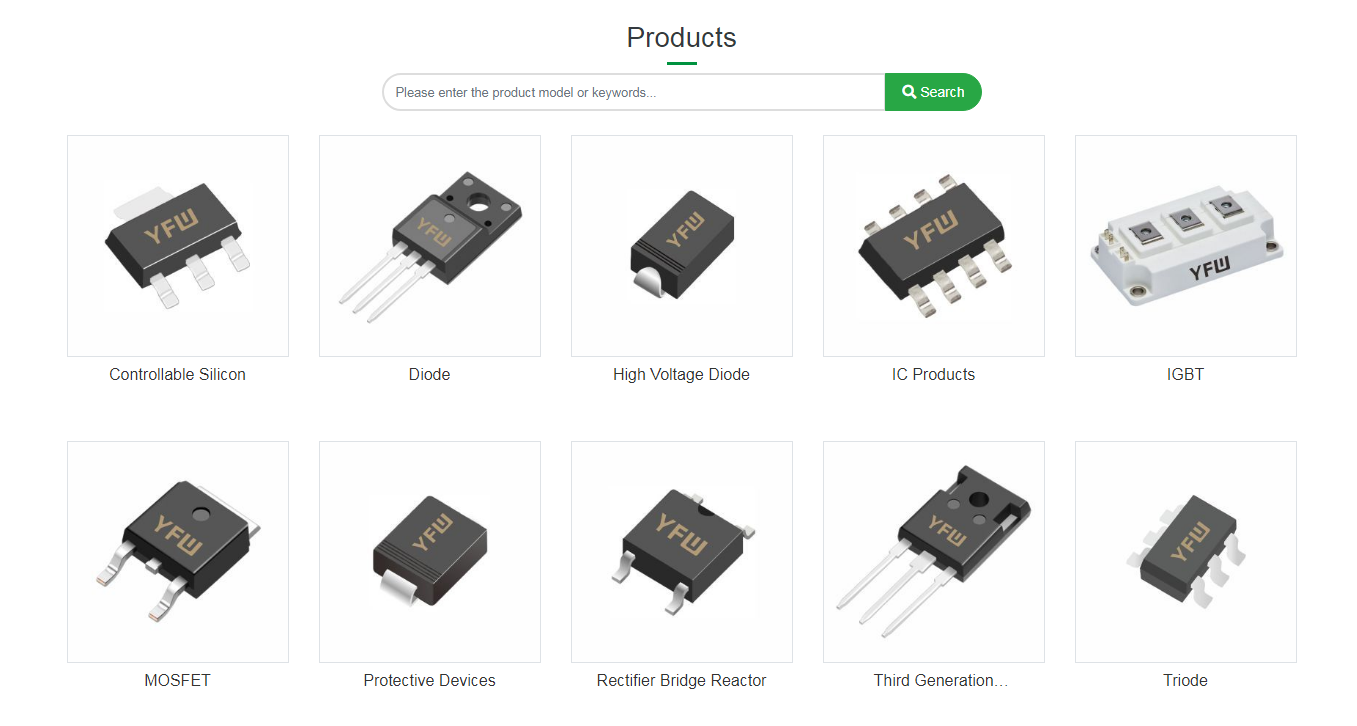Date:2025-03-18 Categories:Industry News Hits:899 From:Guangdong Youfeng Microelectronics Co., Ltd(YFW)
A silicon photodiode is a semiconductor device used for photoelectric conversion. It can convert light energy into electrical energy and has wide range of application fields, including communication, photoelectric measurement, photoelectric detection, etc. The following will introduce the basic structure, characteristics, working principle, application, detection, installation and use, and development history of the silicon photodiode in detail. 1. Basic structure: The basic structure of a silicon photodiode includes a-type silicon region, an N-type silicon region, and a PN junction. The P-type silicon region is rich in positive charge carriers, and the N-type silicon is rich in negative charge carriers. The PN junction is the contact surface of P-type and N-type materials, forming an electric potential barrier. When light shines on the PN, the light energy is absorbed, and electron-hole pairs are generated, which in turn generate current. 2. Characteristics: 1. High sensitivity: The siliconodiode is very sensitive to light signals and can receive light signals weaker than those visible to the human eye. 2. Wide wavelength range: The silicon photodiode can receive light and near-infrared light, and the wavelength range is typically from 200 nm to 1100 nm. 3. Fast response: The response speed the silicon photodiode is very fast, and it can reach the nanosecond level. 4. Low noise: The noise level of the silicon photodiode is low making it suitable for precision measurement and low light intensity applications. 3. Working principle: The working principle of the silicon photodiode is based on the internal photoelectric. When light shines on the window layer, the energy of the photons excites the carriers in the PN junction, changing the current of the PN junction. This current change can be and analyzed through an external circuit. 4. Application: Silicon photodiodes are widely used in photoelectric measurement, optical communication, and photoelectric conversion. applications include: 1. Photoelectric measurement: Used for light intensity measurement, spectral analysis, light power detection, etc. 2. Optical communication: Used for receiving optical, optical sensors, and photoelectric conversion devices in optical communication systems. 3. Photoelectric conversion: Used for solar cells, photoelectric couplers, photoelectric modulators etc. 5. Detection method: The detection methods of silicon photodiodes usually include the following: 1. Photocurrent detection method: Detect the of light signals by measuring the photocurrent generated by the silicon photodiode under illumination. A current amplifier is usually used to amplify the photocurrent signal and display and record it an oscilloscope or data acquisition system. 2. Photovoltage detection method: Detect the intensity of light signals by measuring the photovoltage generated by the photodiode under illumination. Compared with the photocurrent detection method, the photovoltage detection method can provide higher sensitivity and dynamic range. 3. Spectral detection method Obtain spectral information by measuring the photocurrent or photovoltage of the silicon photodiode under different wavelength light. Usually, a spectrometer or a multi-channel photoc detection system is used for measurement and analysis. 4. Response time detection method: Evaluate its fast response ability by measuring the response time of the silicon photodiode under illumination The common methods include pulse excitation method and autocorrelation method. 6. Installation and use: The following are the steps for installing and using the silicon photodiode 1. Installation: First, determine the positive and negative poles of the photodiode. Usually, the positive pole is the long lead, and the negative pole is the short.

Previous:What is a magnetic sensitive diode and its structure installation faults and solutions
Next:NZT560A 1A 80V SOT-223 Marked NZT560A Small Signal Transistor Y Micro Brand